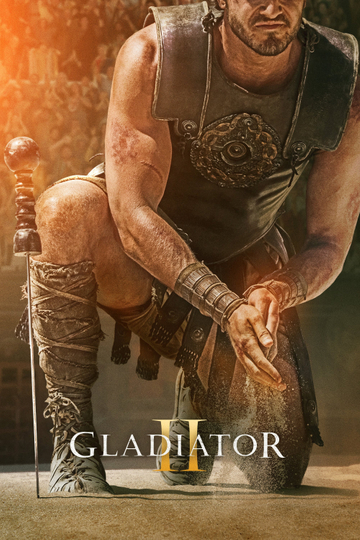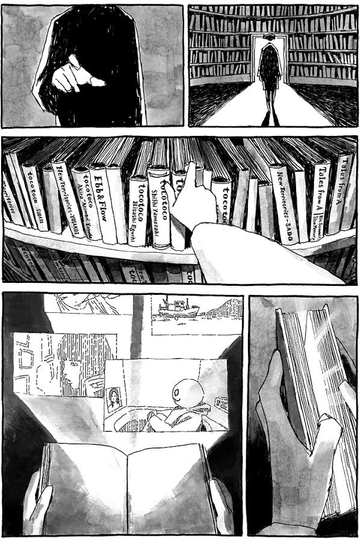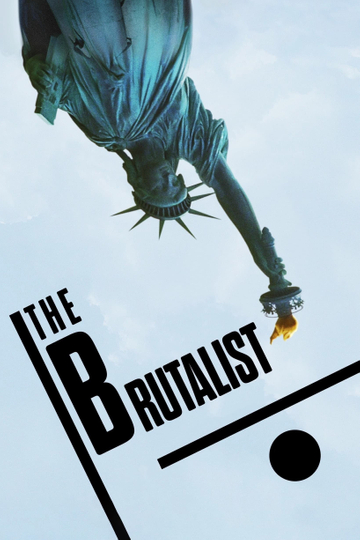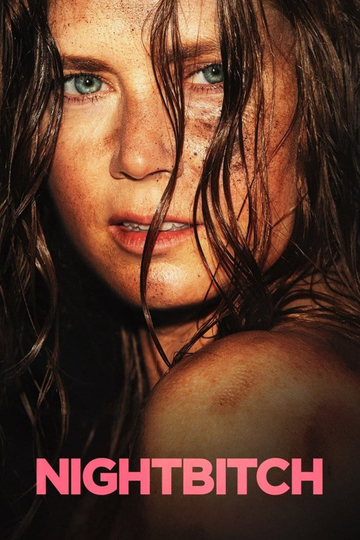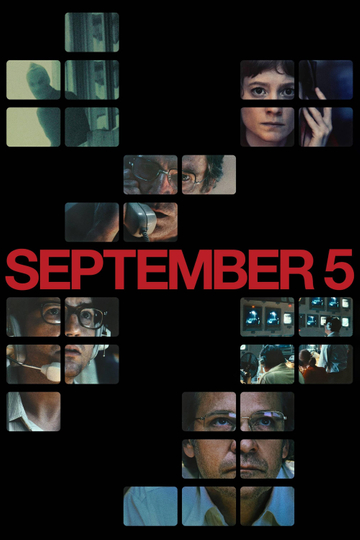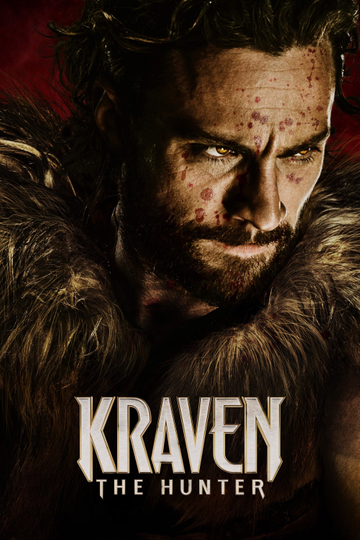Season 1 Episodes
1. Yusuke Shigeta, digital artist
Digital artist, Yusuke Shigeta is taking us to the Yokosuka art museum in Kanagawa prefecture. An exhibition was held during the 2014 summer holidays called "KiRaKiRa ZaWaZaWa HaRaHaRa" where parents could enjoy art with their children. It showcased Yusuke Shigeta's art pieces and four other contemporary artists' work. Yusuke Shigeta is originally a video creator who makes animation and computer graphics. His work is a video installation that uses the whole space of a room. The video is a pixel animation displayed from a projector set on the ceiling. This animation, "Gaso no Mori" (Pixel Forest) is inspired by ten fairytales that you can see by holding a white book opened while wandering in the room. His other art piece is called "Gaso Sansui" (Pixel Scenery) and is inspired by the series of paintings of Ogawa Usen, "Shunkashuutou".
2. Soryo Matsumura, tea ceremony master
The tea ceremony master, Soryo Matsumura is taking us to the Sankeien Garden in Yokohama, and to his own teahouse "Shuhally". The Sankeien Garden(三渓園) is an artificial garden built about 100 years ago by Hara Sankei. In this episode, we discover the Rinshunkaku built by the shogun Tokugawa Ieyasu's son about 350 years ago and other traditional Japanese teahouses such as Kinmokutsu and Shunsoro. Soryo Matsumura also invites us to his teahouse "Shuhally" situated at the 5th floor of a regular condominium in Yokohama.
3. Michihito Fujii, film director
Michihito Fujii, a film director from Babel Label is taking us to the Akagi Shrine which is one of the most elevated spots in Kagurazaka. Kagurazaka is a very inspiring city for artists and has an atmosphere very similar to Kyoto. The Akagi shrine is a very elegant shrine with walls made of glass that has been rebuilt recently. Flea markets or second-hand markets are held on weekends at the Akagi shrine. Michihito Fujii also invites us to the Babel Bar in Shinjuku, next to the Shinjuku Gyoen park. The Babel Bar has been created by the Babel Label production company, so that creators can gather and talk about cinema.
4. Hima://Kawagoe, illustrator
The designer Hima Kawagoe's brand called "Seitekisatui" (Sex and Death) is showcased at the department store PARCO at Shibuya during the Shibukaru Festival that is featuring female creators. Hima Kawagoe shows us her bestseller "Memeo", an accessory in the shape of an eye with false lashes that has been reblogged over 9000 times on tumblr. Hima Kawagoe also shows us a shop called GYFT that is showcasing some of her creations during the Shibukaru Festival. Then, Hima Kawagoe invites us to her home that she also uses as her atelier. Originally, Hima Kawagoe is an illustrator, but "Memeo" became so famous on tumblr that she decided to make it an accessory. Hima Kawagoe also has her own indie label.
5. Wagashi Asobi, Japanese traditional confectioners
Motohiro Inaba and Rio Asano take us to the publishing house “Cotonoha” situated in the sweet and retro neighborhood of Nagahara. “Machi no Techo Ikegami-sen” is a magazine published by “Cotonoha”. Ikegami line is a railway line that runs through Tokyo from Gotanda to Kamata on the south side of Tokyo. “Machi no Techo Ikegami-sen” is a magazine that introduces culture and shops around the Ikegami line. It featured the Japanese sweets shop “Wagashi Asobi” in one of their publications. The particularity of the Ikegami railway train is that contrary to most of Tokyo’s trains that are long, it’s relatively small as it’s a 3-car train. “Machi no Techo Ikegami-sen” is a magazine that talks about the neighborhood’s history. The Shochiku movie studios were once located in Kamata (end of Ikegami line) where directors such as Ozu Yasujiro used to shoot. This magazine is sold in shops, bars, and book shops along the train tracks and on “Cotonoha’s website”. Then, Motohiro Inaba and Rio Asano invite us to their atelier “Wagashi Asobi”. They make two types of sweets: the dry fruit yokan and the herb-aroma rakugan.
6. Professor Sakamoto, 8-bit musician
Professor Sakamoto is a composer who has the perfect pitch in his ear. He plays video game musics with a Nintendo console strapped to his head where he inserts cartridges. He also composes original songs in the chiptune or chip sound style. Besides Japan, he recently performed in France at the Japan Expo or also in Sweden and London. Today, Professor Sakamoto invites us to the "Ninety" bar situated at Akebonobashi, two stations away from Shinjuku station. This game bar is situated right next to his music label company, "Lastrum". People can gather at "Ninety" to play games while having a drink. They can even bring their own game consoles such as PS Vita or 3DS. You will find a lot of old games, manga, anime, cards and board games. The decoration of this bar is composed of rare Famicom games and antique consoles. It is the perfect place for people who love games, and want to have fun while eating and drinking.
7. Kyoka, electronic musician and artist
Kyoka is a musician who creates electronic music. She uses bass and high-pitched sounds in order to bring out the basses. She also creates works using light, reflections and colors where she tries to express the same emotions as with music. Every year, the ICC is hosting the OPEN SPACE exhibition. Today we are going to the 2014 edition. The ICC art center is a place specialized in what we call "multimedia arts". It is a place exhibiting art, but also all kind of technologies that are featured in modern art. ICC's goal is to globally show the relationship between art and technology. In this episode, Kyoka and Mr. Hatanaka, the chief curator at the ICC center are showing us several installations. The first installation is a setting called "video synthesiser" and was created in the 70s by Abe Shuya, the engineer who was working together Nam Jun Paik as part of his research in video art. Three oscilloscopes are connected to the synthesiser in order to interfere with the video signal and obtain multiple patterns and modifications. It is the same type of process as the one used in electronic music, but applied to video. The second installation introduced in this episode is the work of Shimizu Jio. It uses lasers' relflections on water. The third work is called "The Immortal", created by Cohen and Van Balen, two artists active in the United Kingdom. It is a visual and sound installation featuring a series of organ replacement machines. The fourth work we introduce is called "Cube". When we alter the shape of a cube on a computer, it can be done in the blink of an eye. This installation shows how it is done in the real world. Don't hesitate to go take a look at the ICC Art Center!
8. Arisa Katayama, Walking Bicycle project leader
Today, Arisa Katayama the leader of the "Walking Bicycle" project is taking us to her favorite cafe "Hanabi" situated in Nakameguro. Riding the Walking Bicycle, a new vehicle which mixes the stepping movement with an electric bicycle, she will guide us in the hip area of Nakameguro. Located on the Meguro river bank, "Hanabi" is a polyvalent place to chill out and can be used as a cafe, a restaurant, or a bar. The cafe "Hanabi" is very convenient because it's a place where you can leave your bike in front of the store and come with your dog, which is really rare to find in Tokyo. In summertime, there is also a patio decorated in a Japanese manner. It's a place where you can come and enjoy spending time with your dog, or with your family and friends. Arisa Katayama used to live for a long time in the United States, so she likes to go to Japanese style cafes where she can drink genmaicha or green tea. "Hanabi" also offers a wide array of Japanese dishes and desserts as well as drinks like craft beers or Japanese alcohols in the izakaya and space in the back of the shop. The Walking Bicycle project started in 2009 and was initiated by a 70 years-old car parts company located in Okayama. Its engineering team wanted to create a vehicle simply based on the concept of walking. They also wanted to have all parts "Made in Japan". The walking bicycle is a three-wheeled vehicle so it is very stable and there aren't any balance problems. An electric assist helps you to climb the hills without any trouble. Many prototypes were made and many famous designers worked on this project. Be sure to go to Nakameguro when you visit Japan!
9. Riyoo Kim, ceramic artist
Today, Riyoo Kim, a ceramic artist is taking us to "Spiral", a multi-purpose cultural center situated in Omotesando, where he is helding an exhibition. Various exhibitions, salons and other contemporary art projects are held there. Riyoo Kim studied ceramics of the Jomon and Yayoi eras. What is fascinating about ceramics is that it can last for more than fifteen thousand years if buried. What has been made by the hands of humans who lived fifteen thousand years ago still remains today. Riyoo Kim would also like to leave a message to future generations, using ceramics. In this episode, is introducing to us the "Arts Of Jomon" exhibition. The Jomon era is the starting point of Japanese antic culture. It span is over ten thousand years, with no wars or human disasters. The era is famous for its Jomon ceramics which characteristic is the use spiral shapes. Riyoo Kim is presenting his work but also other artist's work, such as Takeya Takayuki's, a figurine sculptor. Takeya Takayuki created a Dogū clay figure with eyes shaped like googles. He is also introducing us to the work of Mr. Ifūrai, a reknown ceramist. We are also discovering the Spiral shop with Riyoo Kim where the item selection is all under the theme of "intemporal design". You can appreciate various aspects of Japanese craftsmanship. It is the perfect place for visitors to find a nice souvenir. In the Spiral center, there is a cafe and a mezzanine floor where you can relax while admiring the view over Omotesando.
10. Fuyuki Kanai, illustrator and performer
In this episode, Fuyuki Kanai, an illustrator is introducing us to PARK SHOP and GALLERY located in Hirai, in the Edogawa ward. He is holding an exhibition called "PARCHIVE" that is commemorating the opening of the gallery. Hirai is an old school neighbourhood that doesn't benefit much from the latest policies in urbanism. However, it is this kind of places that young people choose to open cafes or galleries. This new movement is very interesting and PARK is part of it. The PARK SHOP and GALLERY is very close to the station, about one-minute walk and opened in January 2015. It takes its name from the small park across the street. Both share the purpose of bringing people together. His goal is to create a place where art, culture could mix with the life of the neighbourhood. The exhibition space is in the back. Artists exposing are also making clothes that you can find in the PARK SHOP. Inside the gallery, there are also books, second-hand clothes, and a place where you can quietly read while drinking free coffee. Edogawa is a very traditional area and even though the Tokyo Sky Tree tower is located right next to it, tourism hasn't developed in the area. Fuyuki Kanai finds it interesting to have this new form of culture mixed with the old-style neighbourhoods. He exhibits his work in various places and also publishes a lot of comics. He studied Cinema at university and also did some theater. He did all kind of things but decided to go back to what he loves, drawing. Since Fuyuki did some theater he is sometimes doing dance performances as a hobby.
11. Ayaka Matsuno, cookie artist
Today the cookie artist Ayaka Matsuno is taking us to a Korean restaurant called "Pungumu" situated in Shin-Okubo, close to Shinjuku. Shin-Okubo is known as the Korean district. There you can find K-pop and beauty products, and also Korean restaurants. The restaurant Ayaka Matsuno is introducing us is specialised in Samgyeopsal, a Korean dish using grilled meat. The Samgyeopsal is prepared using a hot plate that is placed diagonally in order to dispose of the fat. After grilling the meat, we roll it in lettuce leaves and we add spices and other toppings. As a K-pop fan, Ayaka Matsuno likes to eat at "Pungumu" with her friends, discuss about K-pop bands while eating Korean food. Then, Ayaka will show us how to make cute cookies decorated with sugar icing. For this special occasion, she will feature the show's characters. She uses powdered sugar, egg white and food coloring. Ayaka Matsuno first started making this kind of cookies when one of her friend asked her to make original dishes for an opening event gathering creators. She likes strong visual and that's how she likes to express herself, through cooking and food.
12. Montblancs, comedy duo
Today the comic duo "Montblancs" is taking us to a neko cafe in Ebisu called "Nyafe Melange" and to "Theater D", a live house where they usually perform. Montblancs (モンブランズ) is a duo composed of Daisuke Kita and Kazutaka Aizawa. They perform on Japanese television, events, live house. The place Montblancs wants to introduce is a very popular place among Japanese people and foreigners: the Neko cafe (cat cafe). It is a place where you can drink coffee while playing with cats. At Nyafe Melange, there is over 20 cats, food and drinks. Then Montblancs introduces us to "Theater D" situated in Shibuya. It is a small live house that can welcome up to 80 people. Every comedian who aspire to become famous perform at "Theater D".
13. Take0920you, video games youtuber
Today Take0920you, a video game streamer on Youtube, is taking us to Akihabara, to the Kanda Myojin Shrine and to the retro game shop "Friends"! The video game streaming culture is growing more and more in Japan and Take has been streaming for 4 years now on many games but mostly on Minecraft. Take is taking us to Akihabara, known as the electric town, where you can find a lot of video games shops. The first place Take wants to introduce is a shrine situated at 5 minutes walk from Akihabara's station, called the Kanda Myojin Shrine. The Kanda Myojin Shrine is famous for people seeking good fortune in business and trade. You will find the ema wooden plates, that are ex-votos on which people write a wish they would like to see come true. As the shrine is situated close to Akihabara, a lot of these plates are decorated with animation character portraits. The second place Take is introducing us is a retro game shop called "Friends" which is a famous store, quite hidden in Akihabara. You will find Game Boy games, Famicom games, Game Gear games but also very recent games as well. Take is looking for a retro game called "Spelunker" known to be one of the hardest game.
14. Rui Hashimoto, photographer
Today the photographer Rui Hashimoto is taking us to the Le Déco gallery in Shibuya, where he is holding every year the SOUND SHOOTER exhibition. The Le Déco gallery is on the opposite side of Shibuya's popular locations, such as Center Gai, Udagawacho or Harajuku. With the upcoming Olympics in 2020, this area is being entirely renewed. The building of Le Déco gallery was made at the time of the 1964 Olympics, and it is quite rare in Japan to have one gallery take up a whole building, from ground to the fifth floor. On one floor he is exhibiting landscape photos taken on film. Pictures Rui Hashimoto took when he was travelling a lot for about 6 years, in Europe, America, in places such as Germany, Belgium, France, the Netherlands, but also London or New York. When travelling he used to walk around town about eight hours a day, taking pictures in the streets. During that time, he often listened to the tracks the singer of the band "Straightener", Horie composed for Ent, his solo project. The style is oriented towards folk electronica. When he released his collection of pictures, Rui Hashimoto asked Horie to compose an original soundtrack and also to choose the title of the book : Journey in January The second floor of the SOUND SHOOTER exhibition has all its walls painted in black, which is rare in Japan, to give it the atmosphere of a live house. He is the official photographer of bands such as 9mm Parabellum Bullet, The Black Horn, Straightener, The Bawdies or One Ok Rock, The Hiatus and Nothing's carved in stone.
15. Umi-kun, singer and cosplayer
Today the singer and cosplayer Umikun will be showing us the cosplay event acosta! at Ikebukuro. The organiser of the acosta! event is a company (Acosta) that rent studio to cosplayer who take their pictures there. Everything that a cosplayer is looking for can be found at this event! The event has a reception, cloakrooms where cosplayers can change into their favorite character's clothes, various backgrounds to take pictures, and goods stores. There are plenty of settings that recreate various anime's world. In Japanese anime, there are lot of stories centered around school life or extra-curricular activities, so you can find a grass area that looks like a sport court. There are also classroom setting, costumes and weapons that can be rented at the event as well. You will also find beauty products such as foundation, designed especially for cosplayers. The best part of the event is being able to cosplay outside. As the city supports the event, you can walk freely around the streets of Ikebukuro and there are a lot of stores, restaurants, karaokes, game centers or even aquarium where you can go dressed as your favorite anime character. Cosplay lovers gather at this event to share their passion, meet new friends, and take a lot of pictures.
16. Ema and Eri Tanioku, Harajuku tourism ambassadors, models
Today the twin sisters Ema and Eri Tanioku, Harajuku tourism ambasadors introduce us to the not so well known Harajuku, called Ura-Harajuku. First we will visit the cafe Natural Stance, where they usually go after their shopping. For the lunch menu, you can choose 3 delis, and you also get a salad and a soup for 980 yen. They also come sometimes to eat some desserts. There is also brown rice with the menu, which is really healthy. Ema and Eri travel a lot, especially around Asia to promote Harajuku. Harajuku is well known for its famous street, Takeshita-dori, but Ema and Eri want to show that there are plenty of other charming cafes and shops to visit in Harajuku besides Takeshita-dori. The second place we are visiting with Ema and Eri is a second hand shop situated at 1 minute walk away from the Natural Stance cafe. They often shop at HUG because they like the natural style of the shop, and they also love their customised clothes.
17. Shichiro Kobayashi, Japanese animation art director
In this episode, a Japanese animation legend, Shichiro Kobayashi who worked on more than a hundred animes as an art director and production designer is taking us to Akiruno-shi, situated at one hour from Tokyo. We will first take a walk along the Akigawa river, and then we will go to Shichiro Kobayashi's atelier where he keeps all his amazing illustrations and paintings. Higashi-Akiruno represents very well the charming japanese countryside. Along the Akigawa river, you will find nature and peace. When he was a child, Shichiro Kobayashi use to look at the river for hours imagining all sorts of things. This is simply where all its creativity comes from: Nature. While sketching, he tells us about his childhood and his passion of drawing that became a career at the age of 30 when color television was taking its first steps. Then, Shichiro Kobayashi takes us to his atelier where he lets its creativity express itself on the paper. For forty years, he worked on famous anime such as Nobody's boy: Remi, Gamba no Boken, Treasure island, Aim for the Ace!, Cobra, Angel's Egg, Berserk, Revolutionary Girl Utena, Ashita no Joe, Nodame Cantabile, and many more.
18. Showta Mori, inventor and director
In today's episode, we will meet Showta Mori, a crazy inventor from Japan who also work as a film director Showta Mori will take us to Asakusa where we'll take a ride on a boat and then he will introduce us the Hama-Rikyu garden. From the Tokyo Cruise boat embarking point, you can go directly to the Hama-Rikyu garden. There are a some famous spots such as the Azuma bridge, but also the Asahi Beer buildings and the Tokyo Sky Tree. At the Tokyo Cruise, you can ride the boats that were drawn by Matsumoto Leiji, famous creator of anime and manga series. But thoses boats are not running today so we will be riding a regular boat. While riding the boat, he will show us some of his creations, such as his well-known iPhone Quick Draw System. Showta Mori was originally doing theater acting, and then started to get noticed on Youtube after uploading videos of his iPhone Deployer, and event started to get work offers from big companies.
19. TEMPURA KIDZ, pop dance group
In today’s episode, we will meet the whole crew of TEMPURA KIDZ, a pop dance group in Japan’s fashion mecca Harajuku. The young and cheerful members of TEMPURA KIDZ will take us to the shop SPINNS, then to the karaoke box located inside the information corner « Moshi Moshi Box ». SPINNS is one of the most emblematic fashion shop chain from Harajuku, with one shop located in the famous street « Takeshita-dōri ». SPINNS offers a mix of original items and vintage clothes at a very low price, thus being very popular among Japanese teenagers who follow the trends of Harajuku fashion. Then TEMPURA KIDZ will introduce the karaoke located in the tourist information center Moshi Moshi Box. This karaoke box can be used for free, offers explanations in many languages and has been designed by Harajuku sensation art director Sebastian Masuda. TEMPURA KIDZ began their career as child back dancers for the famous singer Kyary Pamyu Pamyu, before forming their own unit upon entering junior high-school. Mixing dance and pop music, they often participate in live events in Japan and Asian countries. In 2015, they will perform outside Asia for the first time, with a live performance in France in October.
20. Paranel, musician and producer
In today’s episode, Paranel, an artist and musician will be taking us to visit his friend at animation studio 4℃, in Kichijoji and to the office of his record label. Ten years ago, Paranel created, his own record label, LOW HIGH WHO?. It is one of Japan's first label to offer music in the free download format. At first, the label was doing mostly hip-hop music, one of their artist being Fukashigi / wonderboy who is mixing poetry with rap. Paranel is describing his label as some kind of school for young artists who are starting a career in music, as most of them sign with major labels at some point. He takes care of the office work, the website, the video production and the music composition. He also does sound mixing and CD cover design. LOW HIGH WHO? is interested in music but also in art and culture in general. Paranel has composed the music of a short animation produced at the animation studio 4℃ named Tuzki: Love Assassin. He will be visiting his friends, Hirano Kotaro, CGI director of Tuzki, who works also on movies like Berserk or the upcoming Harmony. The short animation is cool and stylish and was even broadcasted on Time Square's big screen in New York City. The 4℃ studio has also produced anime such as Berserk or Harmony that will be released in November.
21. Daijū Ishikawa, Hebocon creator and journalist
In today’s episode, Daijū Ishikawa will take us to the Cultural Center Tokyo Culture Culture situated in Odaiba and he will also introduce us the robot competition Hebocon of which he is the creator. Tokyo Culture Culture is a talk live house in Odaiba where are held events centered around a very specific theme. Today's theme is "dams", and it is the tenth times the event is held there. You can listen to guests talking about dams and its particularities while enjoying food and drinks. There is also a special menu created for the occasion such as the chicken curry rice in the shape of a dam or original cocktails like the "Dam Sour". You can always be surprised by the menu as it changes depending on the event theme. In the second part of the episode, Daijū Ishikawa is introducing us the robot competition called Hebocon that he created for people who have no technical skills. At first, he just wanted to make an exhibition of robots created by people with no skills but as it didn't gather much people, he decided to make it a competition, a battle of robots following the sumo rules. In Hebocon, there are all sorts of robots that shows how creative participants can be. The goal is not necessarily to win the competition but to have fun and to create the most poorly done robot that will catch everyone's attention by its somehow touching weakness.
22. Miku Sawai, singer-songwriter
In today’s episode, singer-songwriter Miku Sawai will guide us in Shimo-kitazawa and introduce us to vintage clothes shop HAIGHT&ASHBURY. Shimo-kitazawa is a popular aera among young people with many music venue, theaters, record shops, cafes and vintage shops. When she came to the capital to embrace a musical career, Miku Sawai was taking vocal training here, that’s why this aera is full of memories for her. Miku Sawai became singer-songwriter and she sings and compose music for many popular anime series like « Kill La Kill », « Akame ga Kill », « Kimi to boku » or « Saenai kanojo no sodatekata » for example. We’ll visit the vintage clothes shop HAIGHT&ASHBURY. which exist for a very long time in Shimokitazawa and is often featured in fashion magazines. Fashion for the Seventies is trendy during summer 2015, especially wide pants and rock t-shirts that Japanese girls like to wear casually everyday. HAIGHT&ASHBURY has a wide selection of vintage clothes for men and women, even wedding dresses and accessories.
23. Manabu Ōhashi, Animator and Character-designer
In today’s episode, one of Japanese animation’s living legends, Manabu Ōhashi, will take us to Asagaya visit the Laputa Cinema located in Asagaya, a unique cinema showing old Japanese film where he goes often. Laputa, with its unique building design and hidden entrance, is a perfect spot to discover traditional Japanese cinema, or just to relax around a cup of coffee. In the second part of the episode, Manabu Ōhashi takes us to the Laputa Art Animation School, where he is lecturing every week. This school offers a unique curriculum, which as opposed to normal animation schools, is not aimed for students pursuing a career in animation but enrolls students who never did any animation work before. These students get the opportunity to liberate their creativity by overseeing a project from scratch throughout the year. Manabu Ōhashi, who worked on iconic projects such as Ashita no Joe 2, Cobra or Robot Carnival, will then introduce his work as an animator in addition to his vision of the work style in Japanese animation. Lastly, he will introduce " Chibi neko no Tom no daibōken ", an old project directed by Ryōtarō Nakamura, that was brought back to life through crowdfunding.
24. Swery65, Video game creator
In today’s episode, we are visiting Osaka with Swery65, creator of the world renowned games Deadly Premonition and D4: Dark Dreams Don't Die, who will take us to some of his favorites places, some of which had a large influence on his games. First we will visit the KO-HATSU Arcade, a game center specialized in versus fighting games, that also showcases some of Swery’s first games of his career. After that, we will take a break in Ogimachi park, one of Osaka’s few green spots, before heading to Owl’s Nest, a Canadian bar where Swery has been a regular for more than 10 years. This stop will lead us to the second part of the episode, a drinking session in Swery’s go-to bars, the first of which is the bar Nemuri, held by a former college classmate of his, serving some of Osaka’s finest whiskies and scotches. Lastly, our last stop will be at the bar Cactus, the go-to place for tequila in Osaka, where the night continues…
25. Masaki Maenosono, Vocalist and Drummer
In today’s episode, Masaki Maenosono, lead vocal and drummer in the Japanese rock band 8otto, is taking us for a visit Sakai, his home town where we will go and have some delicious local delicacies. While introducing us to his career in music and the thrill of stage performances, we will first visit Kanbukuro, a store located near Terajicho Station that is specialized in Kurumi-mochi, a truly Japanese dish made with round rice cakes and a sweet walnut sauce. Kanbukuro is very famous among the locals and has been open for many generations, making the Kurumi-mochi a popular souvenir and dessert shared with friends and family. We will then remain in the Sakai area and head towards Fukasezushi, another old and traditional store that is specialized in Anago-zushi, an exquisite preparation made with boiled eel. Enjoy this traditional gourmet tour, with a few hints of rock!
26. Naoko Shinpo, Accessory Designer
In today’s episode, Naoko Shinpo, accessory designer and founder of the Ni-Sankaku brand, is taking us to the Yutori-chan bar, located in the Misono Building, home to many mysterious bars. She will introduce us to her work and creations, specialized in cat and animal ears and other headwear, in addition to a "bakeneko", that makes an appearance as a special guest. In the second part of the episode, we will be heading to Rock Star, a Reptile Café located in the Namba area, where customers can freely pet their favorite reptiles, among other animals such as owls, hedgehogs and various insects.
27. Chuya Koyama, Mangaka
In today’s episode, Chuya Koyama, creator of the worldwide hit manga "Space Brothers", that has been adapted in a feature film and an anime, is taking us to the FabCafe, a café and a digital creative space located in Shibuya. The FabCafe is a global network with locations in Japan, Thailand, Taiwan and France; the Tokyo venue is located in Shibuya and holds an open event space for digital creation, with 3D Printers and Laser Printers anyone can use to give life to their digital creations, or engrave their laptops or smartphones. The FabCafe hosted a Space Brothers themed event last year, where fans could buy limited edition goods and attend a panel talk with specialists in spatial exploration. We will then proceed to have an exclusive visit at Chuya Koyama's atelier, where he creates a bi-weekly new chapter of Space Brothers with his five assistants. Chuya Koyama goes back on "Space Brothers"' origins, while giving an explanation of the production process of the manga.
28. Hikaru Cho, Body paint artist
Hikaru Cho is a young artist and designer, which is famous for her ultra realistic body painting work, creating surprising trompe-l'oeil and optical illusions. In today’s episode, she will be taking us to the Cinema Two, located in Tachikawa. Unlike city theaters, this suburb location offers the perfect amount of space and commodity to fully relax and enjoy a film. Hikaru Cho is especially fan of a screen that uses "explosive" sound technology (with speakers originally used for concerts.) Hikaru Cho will then be taking us to her home, which is also her atelier and the place she uses to get inspiration and gather her ideas. We got the chance to take a glimpse at her work with her past achievements, which include collaborations with fashion brands, NGOs or musicians, and a live demo of her truly impressive body painting skills. Take a moment to relax and discover those soothing places, and do not forget to check out the last word!
29. DE DE MOUSE, Electronic Musician
DE DE MOUSE is an electronic musician based in Tokyo, famous for his psychedelic music universe and dynamic live performances. In today’s episode, DE DE MOUSE will take us to Tama New Town, a recent city that grew from ground up after the activation of an urbanism project in the seventies. Its kitsch style of architecture and urban design made it popular in the eighties, however it suffered a drop in population in the nineties onwards, especially from younger demographics. DE DE MOUSE will then take us to the Tsurumaki-Higashi Park, a very important location to him, where he comes to relax and admire the view over Tama New Town from the top of a lonely hill. He used the city as a location for one of his music videos, composed of more than 100,000 photos. Our last stop will be the Tsurumaki-Daini Park, another elevated location with a view over the city favored by the artist, where DE DE MOUSE will tell us more about his music style and his bond with the town, truly defining his style.
30. Hiroto Ikeuchi, Artist and Modeler
Hiroto Ikeuchi is a Tokyo-based artist, specialized in the creation of dioramas using parts from plastic models. Recently, he also started to create accessories such as earphones or headphones using the same concept. During this episode, Ikeuchi will take us to Tama Art University, one of Japan's most prestigious art universities and his alma mater. We followed him to the university's most recent faculty, the Art Science department, introduced by one of his former professors. In the second part of the episode, we will head towards Asagaya to visit Ikeuchi's atelier, which he also uses to showcase his creations. Ikeuchi will explain his work and most recent collaborations to lay more light on his universe, constantly expanding one diorama at a time.
31. DJ Mayumi, DJ
DJ Mayumi is a Japanese female DJ who is also mixing CD compilations, and track maker specialized in hip hop, R&B, reggae and EDM. She released ten CD at Universal Music Japan and one original album. DJ Mayumi loves to walk and drive in the Minatomirai area in Yokohama. This area is famous for its Ferris wheel and the Landmark Tower, as well as its many malls and attractions. The scenery and sky line are beautiful especially at night, it is perfect spot for a date or hanging out with friends. In the second part, DJ Mayumi takes us to Wang’s Dining, her friend’s bar. Located in Motomachi, Wang’s Dining is a « at-home feeling » bar where you can drink, eat, play darts, party or mix at the DJ booth. DJ Mayumi is a long time friend with Wang, the owner and they like to drink together. She recalls how she started to be interested in DJing after seeing a DJ in a bar for the first time.
32. Kenji Kawai, Composer
Kenji Kawai is a world-renowned music composer who made dozens of soundtrack for movies, anime, TV series or games such as Ghost in the Shell, Avalon, Patlabor, The Ring, Ranma 1/2, and many more. He will introduce us to the Kita-Shinagawa area, where he was born and raised and where he is still living today. First we will visit the Shinagawa Shrine, where he used to play as a child. During the shrine's festival in June, the « mikoshi » (portable shrine) is guided by the sound of a Japanese drum and a flute. It’s quite unusual compared to other festivals in Japan. Kenji Kawai liked the sound of this drums to the point it was his inspiration for the soundtrack of « Ghost in the Shell 2: Innocence ». Then, Kenji Kawai takes us to Kita-Shinagawa shopping street. During the Edo period, this street was a part of the Tokaido road, Japan’s most famous central road which was running from Tokyo to Kyoto. This portion was called Shinagawajuku, and it was the first stop for travelers leaving from Tokyo. Kenji Kawai used to walk this street every day to go to school. In the last part, Kenji Kawai take us to his music studio where he spends most of his time composing, recording and mixing music. He’ll tell us about the surprising way he became a composer, his influences, thoughts about composing music. Then, he’ll explain how the famous « Ghost in the Shell » soundtrack which mix drums and Japanese traditional song was born.
33. Gajumaru, Comedy duo
Gajumaru is a duo of comedians and "butt-artists" based in Tokyo, part of the prestigious Office Kitano agency. In this episode, they will introduce Shimokitazawa, an area various subcultures cross paths and where aspiring artists come to perform and attempt to achieve their dreams of fame. First, Gajumaru will take us to Pearl Lady, a shop specialized in crepes and bubble tea, to taste their tapioca-flavored delicacies, before heading to the Makino fabric shop, home of hundreds of different fabric designs for all amateurs of cloth-crafting. This is where the two comedians buy the fabric that makes their red fundoshi, the attire in which they perform. In the last part, we will head over to the Shimokita Studio Thrash, a small theater and playhouse where Gajumaru performs for free on Fridays and during the weekends. There, Gajumaru will tell us more about their activities as "butt-artists". Thrash's stage welcomes various artists, where they get the occasion to perform and refine their art, to some day catch their big break into the industry.
34. Yuka Fukuma, Tokiwa-so Project Manager
Yuka Fukuma works for the Tokiwa-so project, who supports young mangaka aspiring to become professionals. Named after the famous Tokiwa-so house that hosted Tezuka Osamu, among other worldwide famous mangaka, Tokiwa-so counts 27 residences in the Kanto and Kyoto region that host young mangaka from all over Japan and overseas as well. Residents get to exchange and discuss about their work together, in addition to Tokiwa-so staff regularly visiting to give advice on their work. We will meet with two residents of the Shibamata House, Mr. Kita and Mr. Mikami, who will tell us about their experience living in a Tokiwa-so residence and how it motivates them in their work. In the second part of the episode, we will go to the Edogawa river banks, close by the residence, to take a deep breath out of the city noise and enjoy the river's soothing breeze. The two mangaka often go there to clear their heads and think of new ideas, and to observe scenes they could include in their work.
35. KYOTARO, Drawing Artist
KYOTARO is an artist based in Tokyo who works in various fields, such as illustration or fashion, and also did collaborations with world-renowned artists such Katsuya Terada. Today she will introduce us to her work by visiting two of her exhibitions that are held in the city. Our first stop will be the mograg gallery, that specializes in "Japanese lowbrow" art and often showcases new artists. KYOTARO's exhibition gathers more than 170 pieces of her work, mostly centered on pencil drawing, made during the past 15 years. After discovering a few landmarks in Ginza, we will head towards the Morioka Book Store to discover KYOTARO's second exhibition, showcasing her manga work. The Morioka Book Store is unique as it only sells one book at a time, in addition to goods related to the book in order to recreate its universe. This is where we will discover MWUAI, an original story drawn fully by pencil showcase a white bear as its main character...
36. Roa, Rock Band
Roa is a rock band founded in 2014 currently based in Tokyo. The band was formed by 6 members, one of them playing the shamisen (Japanese traditional string instrument), adding a Japanese touch to their Western rock influence. Today, we will meet with two members of the band in Sangubashi to visit a ramen restaurant, where the drummer of the band works. After an introduction of the Japanese noodle dish Tsukemen, we will head towards Shibuya to follow the band through the preparation of its first solo concert, that was held at the Shibuya O-crest venue. We will discover the band's members, style and influences, before diving in a concert that will remain in each member's memory. Additionally, the band will be performing its first live overseas in France this July.
